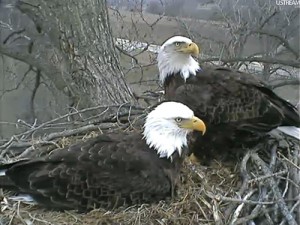 Technology is really amazing. I’m not just saying that because I enjoy the fact that I can buy stamps without going to the crowded post office and I can video chat with my little niece and nephew across the country. While you might criticize technology’s effect on nature and the world as we know it, you can’t deny that it also gives us the chance to get up close and personal with nature like never before.
Technology is really amazing. I’m not just saying that because I enjoy the fact that I can buy stamps without going to the crowded post office and I can video chat with my little niece and nephew across the country. While you might criticize technology’s effect on nature and the world as we know it, you can’t deny that it also gives us the chance to get up close and personal with nature like never before.
Beginning last year, there’s been a huge trend toward putting up birdcams and using tiny, lightweight cameras to capture things we’d never be able to see otherwise. For example, the #1 most viewed live video of all time came from last year when the world became enraptured by the musings of the family of bald eagles in Decorah, Iowa.
Since then, 24/7 live streams of all sorts of wildlife have exploded all over the Internet. If you’ve never seen one and are wondering why anyone would want to watch one of these live birdcams, all I can say is watch one. They are intimate, revelatory, hypnotic and downright fun.
Currently, you can watch a few really interesting feeds. Right now, the San Diego Zoo Safari Park has a Condor Cam, which is a live feed of two California Condors incubating an egg at the zoo. Although the birds are in captivity and they’re not actually incubating the real egg yet for safety reasons (they will once the hatch-date gets closer), it’s still an amazing thing to watch. You get to see these endangered birds up close and join them on their journey.
Also, the beloved Decorah Eagles birdcam is finally back up. It’s way too early for any eggs, but the two beautiful eagles are there and bringing material to their massive nest.
If you have some time to kill, I recommend checking some of these out. You can also get in on the action and buy your own bird camera that can be set up at a bird feeder or in a nesting box.



17 Comments
Interesting question Jeanine. I’m not 100% sure about that, but I don’t think there is a specific time of day when she will actually lay them. I’ll see what other information I can find on the subject.